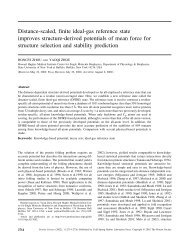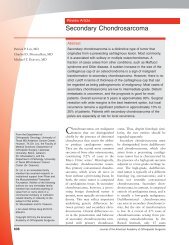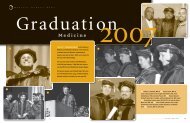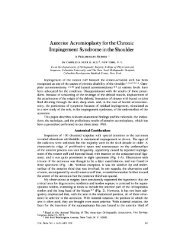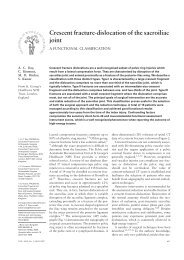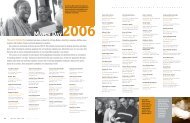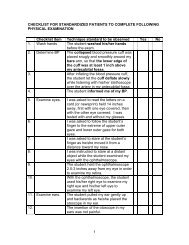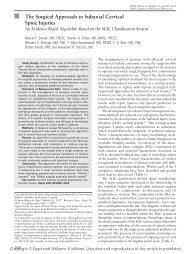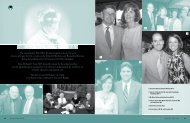Download Residency Training Program PDF - Ross Eye Institute
Download Residency Training Program PDF - Ross Eye Institute
Download Residency Training Program PDF - Ross Eye Institute
You also want an ePaper? Increase the reach of your titles
YUMPU automatically turns print PDFs into web optimized ePapers that Google loves.
the angiogram. We attempt to determine the retinal circulation<br />
time for many studies, and if the fluorescein is not injected rapidly,<br />
low concentration of dye arriving slowly may affect the results of<br />
the study. A most critical period of the study, the acute phase,<br />
occurs just about the time when the injection has been completed,<br />
and the injector is ready to remove the needle from the arm. No<br />
sudden movements or distracting comments should be made at this<br />
time, since the patient is concentrating on fixation. We ask that the<br />
needle be left in the arm in most cases, at least until the<br />
photographer has completed shooting the primary eye, so as not to<br />
cause the patient to move away. The injector should remain in the<br />
room until the second eye is photographed, just in case any<br />
problems should arise. Although fluorescein angiography is a<br />
relatively safe diagnostic tool, side effects from fluorescein occur.<br />
Our findings show that nausea, occasionally progressing to<br />
vomiting, is the most common side effect. Nervousness, not eating<br />
beforehand, and breath holding are the main causes. Extravasation<br />
at the injection site results in intense pain. The greater the amount<br />
extravasated, the more severe is the pain, but even a drop of<br />
fluorescein on the tip of the needle at the time of injection is<br />
painful. The patient will usually react immediately upon<br />
extravasation, at which time the injection should be stopped and<br />
the photographer notified that there is a problem. If you feel that<br />
the needle position is not correct, stop and check it before<br />
proceeding. The exact amount of fluorescein injected is recorded<br />
in the patient=s record and is noted by the physician when the<br />
angiogram is read. Therefore, please do not dispose of fluorescein<br />
that may be left in the syringe. A study of more serious reactions<br />
to fluorescein, by Stein and Parker, reported a mean incidence of<br />
six reactions per 1000 injections, the majority of which were<br />
considered to be allergic in nature, manifested primarily by<br />
urticaria, with angioneurotic edema broncho spasm. Cardiac<br />
arrest, shock, syncope, myocardial infarction, respiratory arrest of<br />
distress may also occur. Sloughing of skin following extravasation<br />
has also been reported. An emergency tray is available in the<br />
photo rooms containing ammonia capsules, diphenhydramine,<br />
epinephrine, atropine, syringes, ambu-bag, esophageal obturator<br />
airway and oxygen. A rubber glove filled with ice is helpful to<br />
hold over the area of extravasation if pain is present.<br />
Discharge Procedures<br />
Residents will be responsible for all discharge summaries,<br />
discharge orders and appropriate follow-up arrangements for all<br />
patients. A personal dictation number should be requested from<br />
Medical Records at ECMC during the first month of residency.<br />
Medical Records will provide the residents with written<br />
instructions on how to use the hospital dictation system.<br />
20




